A Lesson on Digiscoping Techniques – the Zeiss Diascope
I recently conducted some tests in my back yard to determine which digiscoping techniques work best for me.
Aiming my sights on the Boston Cream Pie recipe in a recent issue of Cooks Illustrated with my Canon PowerShot S90, I first compared the two Zeiss Diascopes in my possession – the smaller one with a 65 mm objective lens (pictured below) and the brand new 85 mm version (pictured above). I used same the zoom ocular on each scope (which magnifies 15x-45x on the smaller scope and 20x-60x on the larger).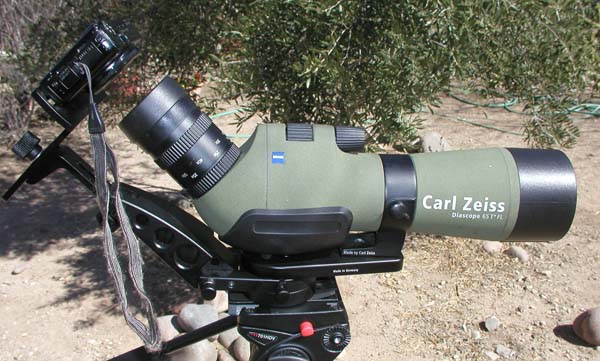
It’s clear from this comparison that the 85 mm version produces better color and a more crisp image. Although I didn’t test them in a low light situation, that’s where the benefit of a larger objective lens really comes in.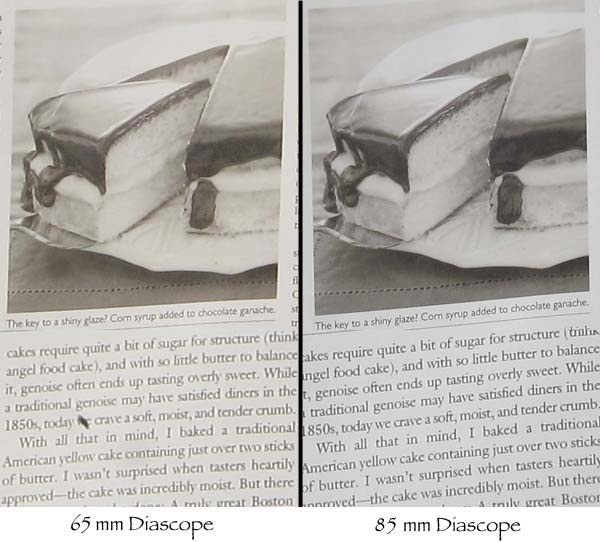
So the rest of these comparisons use the new scope, the one I take with me in the field these days.
Next I compared something that I’d heard years ago – that you get a shaper image in digiscoping if you use the macro (flower) function. It does look to be true in this comparison, but the difference is slight.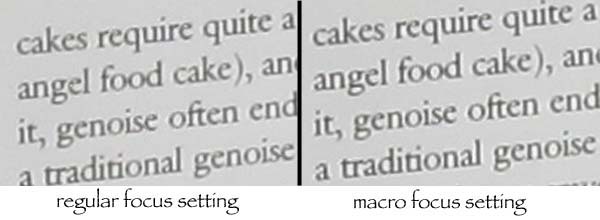
This next test produced what at first is a surprising result – using the new adapter that holds the camera still and in place produced a worse image than just holding the camera up to the scope with my hand. But here’s why: When hand-holding the camera, I have to place the objective lens flush against the ocular lens of the Diascope in order to hold it still. But when I do that I get a smaller field of view with a fuzzy edge; to restore crisp edge I have zoom in using the scope’s ocular lens. When using the adapter, I can pull the camera away from the ocular and keep it centered just a few millimeters away from the scope, thereby taking advantage of the full field of view without having to zoom in. The reason one would want to do this, I was told, was that zooming in even a little bit lowers the light and crispness of the image. Maybe so – but introducing that gap between the lenses seems to allow light to pollute the image and makes for a worse digiscoped picture. I will continue to use the adapter (it’s an obvious advantage in low light situations, windy conditions, and when I’ll be shaking in excitement about a particularly rare bird), but from now on I’ll place it flush against the scope and use the scope’s zoom lens to get a full field of view.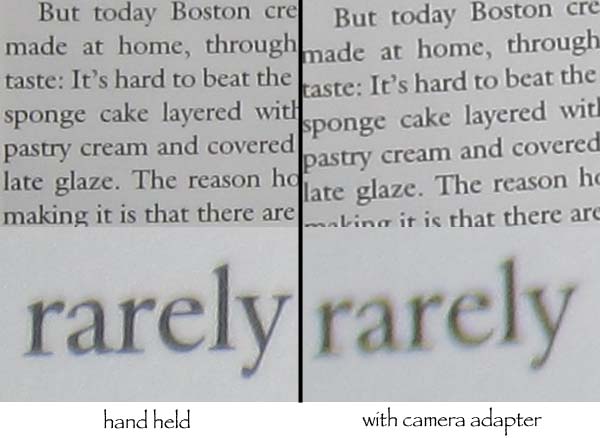
I liked this last test most of all – comparing the camera’s zoom feature. The first photo is with the camera zoomed all the way out, the second zoomed all the way in. I cropped the same part of the photo to compare, and the two are almost identical in focus. Interestingly, the one zoomed in is a bit more contrasty, and perhaps that’s because the camera’s objective extends at the maximum zoom, placing it closer to the scope’s ocular. But at least I’ve learned here that there’s little loss in quality if I have to crop a small image out of a photo taken with the camera zoomed out. And if I want a better shot of details I can zoom in with the camera and still expect a good photo.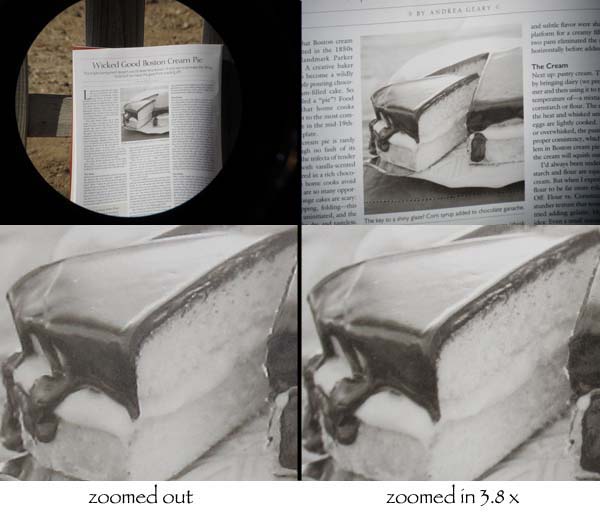
To conclude: The new 85 mm Diascope, macro setting, and holding the camera flush against the scope (even if you have to use the scope’s zoom a bit) is the way to go. And I won’t be afraid to use the camera’s zoom lens on distant birds.

Great post, Rich. I am looking into digiscoping with my Zeiss scope. Need to lighter tripod, or else I shall not carry my scope anywhere.
What camera have you had the best experience with digiscoping with your Diascope?
Thanks,
Josh